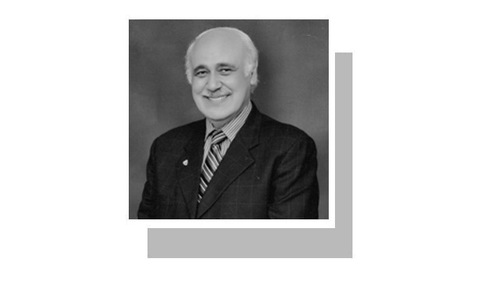US-India defence pact to impact Pakistan, China

WASHINGTON: The United States and India on Monday signed a defence agreement that will have a direct impact on both Pakistan and China.
The Logistics Exchange Memorandum of Agreement (LEMOA) allows the two allies to use each other’s military facilities for checking China’s growing influence in Asia and in the fight against terrorists.
Indian Defence Minister Manohar Parrikar — in the US on a four-day visit, his second in eight months — will also carry forward talks on acquiring jet engine technology and unmanned aerial vehicles (UAVs). He met US Defence Secretary Ash Carter on Monday.
The text for the logistics cooperation agreement was finalised during a visit of Prime Minister Narendra Modi to Washington in June.
Read: India, US ‘agree in principle’ to share military logistics
The US and India are also finalising two foundational agreements — the Communications Interoperability and Security Memorandum of Agreement (CISMOA) and Basic Exchange and Cooperation Agreement for Geo-spatial Cooperation (BECA).
The logistics agreement provides for each country to use the other for supplies, spare parts, services and refuelling. Effectively, US armed forces can operate out of Indian bases, and India can use US bases across the globe.
“China and Pakistan beware — this week, India and US sign major war pact,” warned the Forbes magazine in an article.
The US media noted that the agreement was a key part of the Obama administration’s strategy to contain China, which has been spreading its influence across Asia.
The media reported that the US Navy planned to deploy 60 per cent of its surface ships in the Indo-Pacific in the near future.
The media reports pointed out that unlike Afghanistan and Iraq, where the US had to build everything from scratch, India already had the military facilities the United States could use when needed.
The Indian media, however, warned that such agreements could irk Russia, a long-time Indian ally. But Indian media reports also noted that Prime Minister Modi did not appear much concerned about Russia’s possible reaction to his closeness to the US. The Modi administration had committed itself to building a new alliance with the US and its allies, such as Japan and Australia, the reports added.
The US media noted that India remained on hostile terms with China and this hostility had moved from border disputes to economic and strategic competition for influence.
They noted that the US would like to use the LEMOA to counter China’s growing military might — particularly airbases — in the South China Sea. But the agreement would allow India and the US also to use each other’s facilities against their common enemy, religious terrorism.
The reports noted that a recent bombing by the militant Islamic State group in Bangladesh rang alarm bells in Washington where defence experts were already worried about its efforts to increase its influence in Pakistan and Afghanistan.
“Having LEMOA makes it much simpler for American naval and air forces to fight there. The US does not have actual bases in India. But, it has the next best thing — a simple way to use India’s bases,” Forbes noted.
The magazine described the LEMOA as “the key way-station on agreements still to come of military technology sharing of tremendous importance for India”.
The future agreements, like the CISMOA and BECA, would help India “stand up to the emerging superpower of China”, the report added.
But experts warned that India’s ability to build jet engines or acquire UAV technology from the US would further weaken Pakistan’s conventional defence capability as well.
Examine: Pakistan concerned over growing Indo-US ties: Sartaj Aziz
The United States already recognises India as a Major Defence Partner, helped it join the Missile Technology Control Regime and is willing to provide licences for top US defence technology.
The Forbes article noted that arms India acquired from the US would help it “in many friction points”, such as in the fight against terrorist groups like Jaish-e-Mohammed.
It pointed out that the group was considered an enemy both by the US and India and its chief Masood Azhar was on India’s hit list.
Earlier this year, India tried to persuade the United Nations to declare Mr Azhar a global terrorist but China blocked the move.
“So while the South China Sea may seem far off from India, China is breathing down India’s neck, up close and personal,” Forbes commented.
Published in Dawn, August 30th, 2016



































